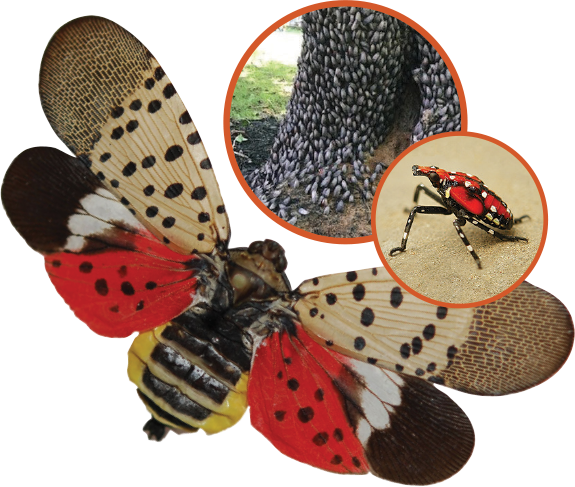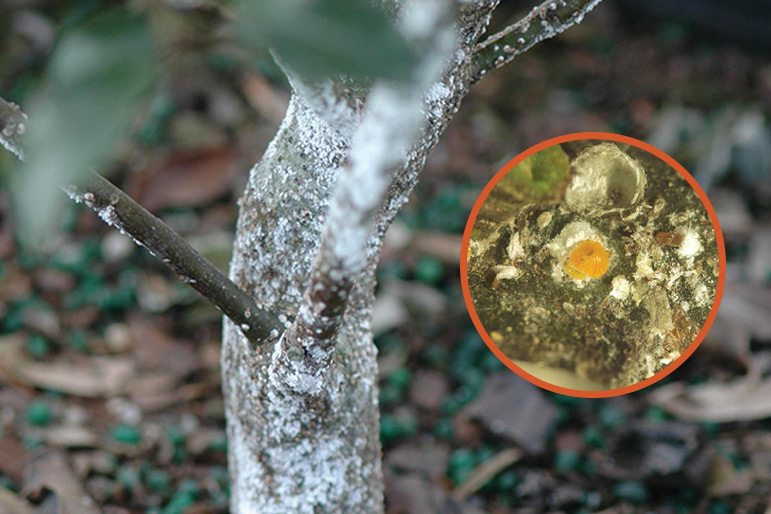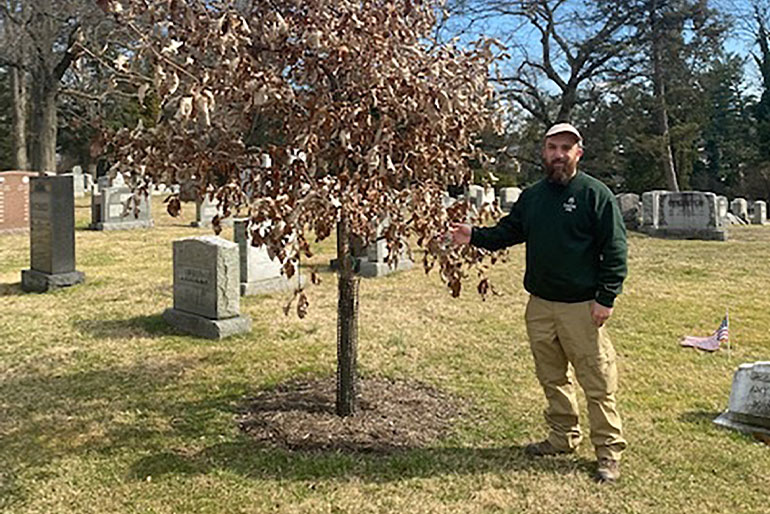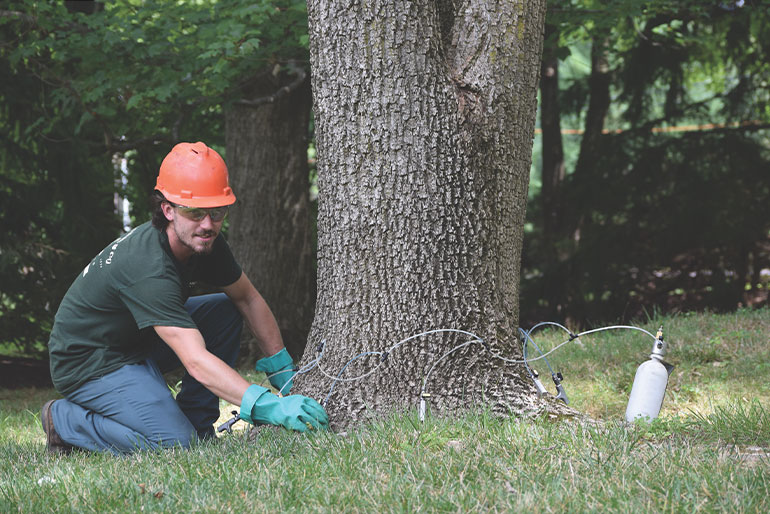

White Prunicola Scale
White Prunicola Scale is an armored scale insect that feeds on lilac, holly and Prunus species (cherry, cherry laurel, plum). In 2017 this pest had a major population explosion late in the season that did major damage, especially to cherry laurel. This is a hard-to-control insect due to its lifecycle and habitat on the stems and twigs of trees and shrubs. Monitoring and applications of pesticides during vulnerable life stages are the keys to managing White Prunicola Scale
Spotted Lantern Fly
The Spotted Lanternfly (SLF) is a new invasive pest that was discovered in Berks County, PA in 2014. Since then it has multiplied rapidly and spread to at least 13 counties in Southeastern PA. The SLF is like an overgrown leafhopper that uses piercing mouthparts to drain host plants of carbohydrates. The insect damages plants by depleting their resources and also causes a sticky black mess from excess sugars secreted as a waste byproduct. Adult SLF swarm in large numbers in the fall when they mate and lay eggs. Its preferred host is the invasive tree Ailanthus, or tree of heaven, but SLF also feeds on maple, willow, sycamore, walnut and pine. The Department of Agriculture has placed all of the counties in our area under a quarantine to help stop the spread of SLF. For more information about this pest, please go to the resources section of our website, or www.agriculture.pa.gov/spottedlanternfly. We are hopeful that eradication efforts will be successful.
Winter Injury
Single-digit low temperatures this January caused leaf and needle browning on certain plants such as cherry laurel, Nellie Stevens holly and Blue Atlas cedar. We expect these plants to recover from the stress, but it is a reminder that some popular plants might not be perfectly suited to our climate. Another consideration is late frosts. Experts tell us that even if average winter temperatures go up, the date for the last frost will remain the same, which could cause more winter desiccation on broadleaf evergreens.
Emerald Ash Borer
Emerald Ash Borer (EAB) has established populations all over the Main Line and surrounding areas. We expect that there will be a remarkable increase in EAB numbers this year and scores of untreated ash trees will die. We are protecting ash trees with a direct trunk injection of Emamectin Benzoate that protects healthy ash trees from EAB for two years. If you have any questions about this pest, or if you are not sure if you have ash trees, please contact our office.

English ivy, Hedera helix is an evergreen groundcover and climbing vine hardy in the Philadelphia area. Long utilized as a ground cover, the...

The Arboretum at Laurel Hill is collaborating with Cornell University to grow hybrid oak trees at their cemetery in Bala Cynwyd.
The project was...

Oak Wilt
Oak wilt has always been one of those diseases that we were happy to not have to deal with. We were aware...